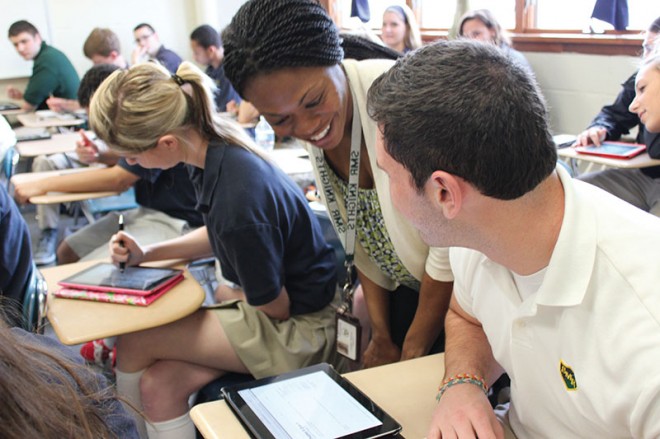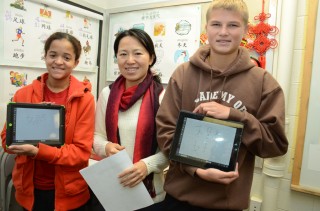For several classes at St. Mary’s Ryken the sequence of classroom learning has been turned on its head or “flipped.” What it means is that students watch a teacher-created video on the lesson at home, and then come into class the next day to work on the problems, questions, essays, etc., associated with the lesson.
Math teacher Joanne Person decided to give the flipped classroom a try when she kept encountering the two biggest problems with homework: the first is that the student can’t remember how to solve a problem, gets frustrated and then doesn’t complete the homework; and the second is when a student spends a lot of time figuring out a problem, but figures incorrectly, and then goes on to make the same mistake on all homework problems.
“We now use our classroom time to work on the chapter’s activities and problems together, and to answer any questions about the concepts being introduced,” she explained.
“I loved the idea, but wasn’t sure how to actually implement it in the classroom,” began Spanish teacher Crystal Dunkin. She applied for a fellowship through the Northeast Conference on the Teaching of Foreign Languages and won the SANS Inc./Mead award which provided her with a mentor and resources to focus on flipping her classroom.
“My students responded very well,” said Crystal. “They appreciate not struggling on their own to do a task, such as writing a paper, because we can use class time to do that now, and that is when they need me the most.”
Joanne concurs that the students took to the flipped method quickly because “it’s self-paced learning. Each student is able to go at their own speed without waiting for or trying to catch up to the rest of the class.”
Both teachers have seen improvements in student confidence in the material, work and skill level. And both plan to continue with the flip. “I teach all of my classes this way,” said Crystal Dunkin. “I can’t imagine ever going back to a traditional classroom model.”


